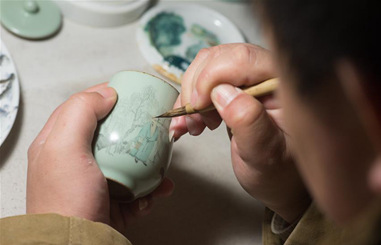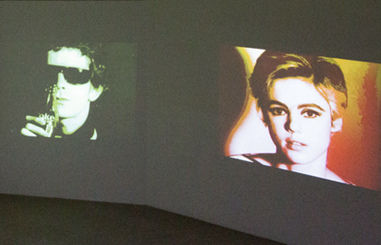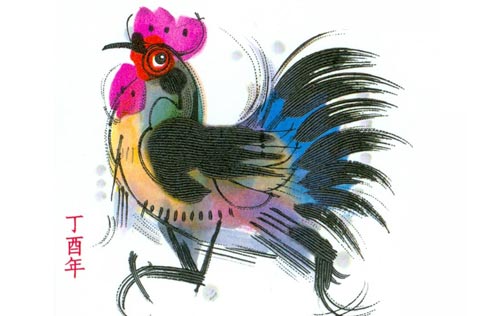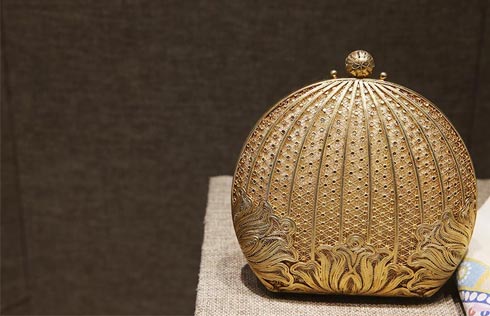The art of going global
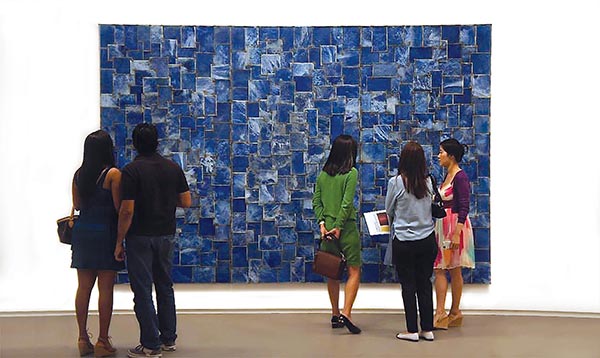 |
|
Visitors look at a painting by Nathan Slate Joseph at Sundaram Tagore Gallery in Singapore [Photo/Courtesy of Sundaram Tagore Gallery] |
If you want to be a successful art dealer in 2016, forget sitting in your gallery waiting for customers to come in – and instead embrace a global, connected strategy. That's the key message from entrepreneur Sundaram Tagore, whose galleries in New York, Singapore and Hong Kong showcase contemporary art from around the world.
For Tagore, a global strategy means following art fairs from continent to continent, riding the rising wave of online sales, offering an increasingly eclectic range of international art and artists, staging pop-up exhibitions in major capitals and turning the traditional gallery visit into a lifestyle experience. With the critical art fair season going into full swing, he's about to embark on a frenetic travel schedule that will take him to Miami, Singapore, Palm Beach, New York, Dubai and finally Hong Kong for the 2017 Art Basel fair, to be held from March 23 to 25.
New York has been home for Tagore since he completed his art studies and joined the bohemian art scene in the city's Soho district of the 1980s, befriending leading post-war art figures including Roy Lichtenstein and Robert Rauschenberg. Tagore opened his first Soho gallery in 2000 – Rauschenberg threw a party to celebrate – and he already looks back on it as a distant era. "The art world back then was located in a physical space," he recalls. "If you had an art gallery, as a gallerist you sat in the gallery and waited for a client to come in."
So how has the art market changed? "As the world has flattened – especially in the context of how the art market functions – people from New York travel to Hong Kong during auction and art fair season, and vice versa. Mainland Chinese collectors will end up in Miami and at European art fairs," explains Tagore. "The easiest way to consume art is through art fairs or online, so the old school brick-and-mortar type of gallery can't be your only point of access. The internet has become a very important dissemination and consumption channel. You have to have an understanding of how people view and buy art, which these days includes phones and tablets."
It's a view backed up by the numbers. Art sales totalled $63.8 billion globally in 2015, down 7 per cent from 2014, according to a report published earlier this year by The European Fine Art Foundation. However, online sales bucked the trend and rose by 7 per cent, reaching almost $5 billion.
Technology is also set to impact how people view and buy art. "If we mount an exhibition in New York, thanks to virtual reality a collector will be able to walk through the gallery anywhere else in the world," says Tagore. "It will allow collectors to make a much better judgment in buying a particular piece because they will be able to 'walk' around it and look at it from all angles."
Tagore also says the old days of monocultural offerings are over. "You are no longer showing artists from just one country – but from 18, 20, 30 different countries if you are a big enough gallery." He also believes that galleries today must offer a full lifestyle experience, including conferences, lectures, visits to working artists' studios and art tours to different parts of the world. "Galleries must take on a multifaceted role – as the bricks-and-mortar role changes and dissolves, they must take up a new position."
Increasing globalisation has also revealed marked differences in how artists work. "A lot of artists in the West, for instance, are very interested in producing paintings. But in Asia and some of the emerging markets, or with developing artists, they tend to produce installations and other forms of art that require manufacturing," he says. "Collectors' tastes have evolved – we get a new set of eyes every 20 years – and art has lost its definition as something you put on the wall."
However the market adapts to changing tastes and technologies, Tagore says there is one fundamental principle that shouldn't be forgotten. "It is of paramount importance that we can come face to face with a work of art and have that chemical, primal reaction. That way, we can directly experience what the artist intended."







